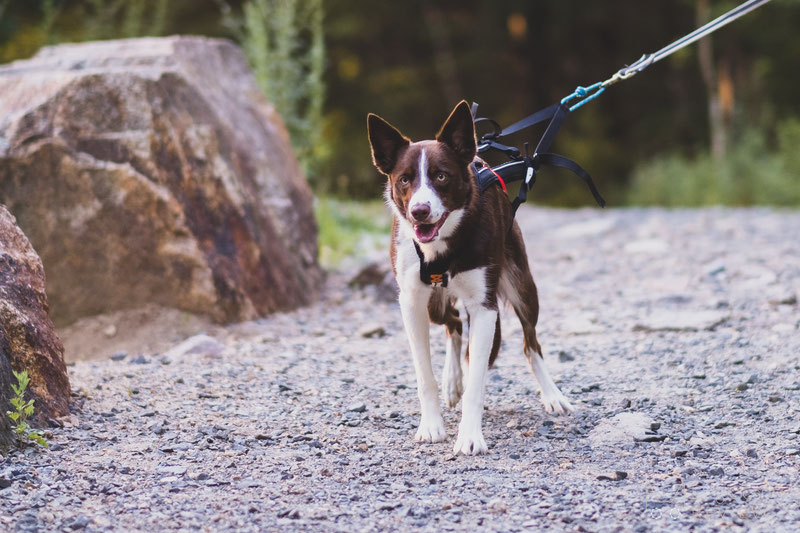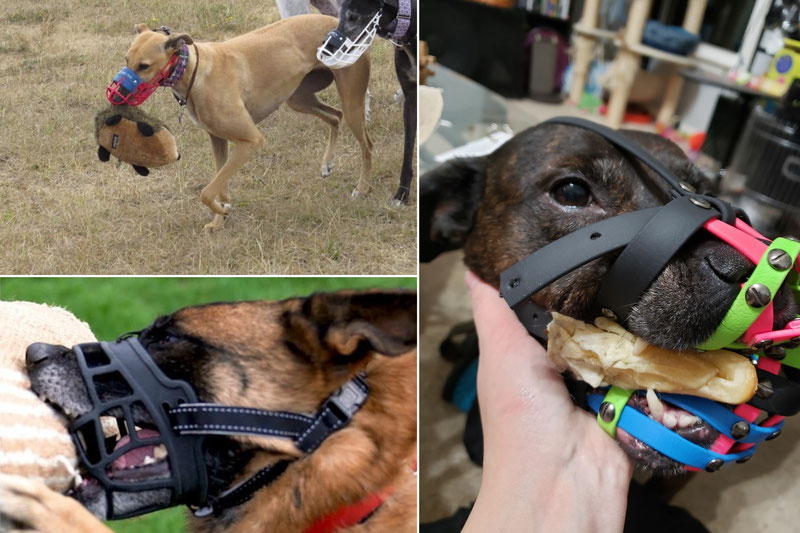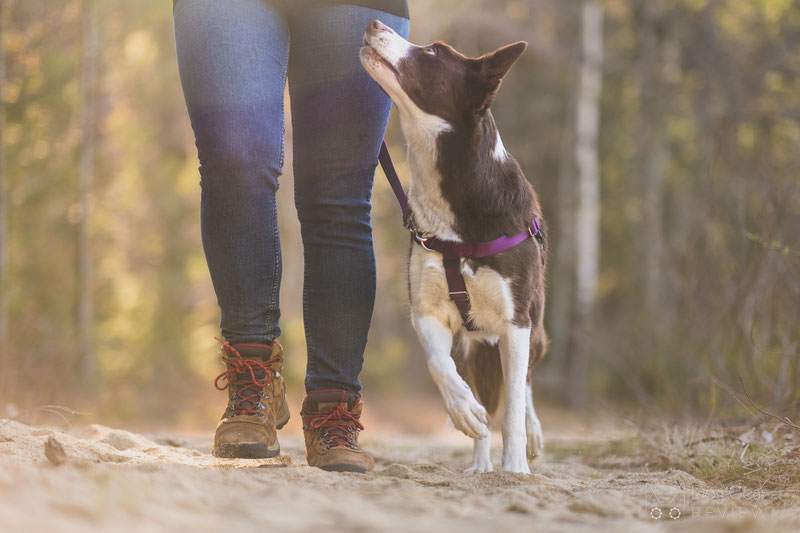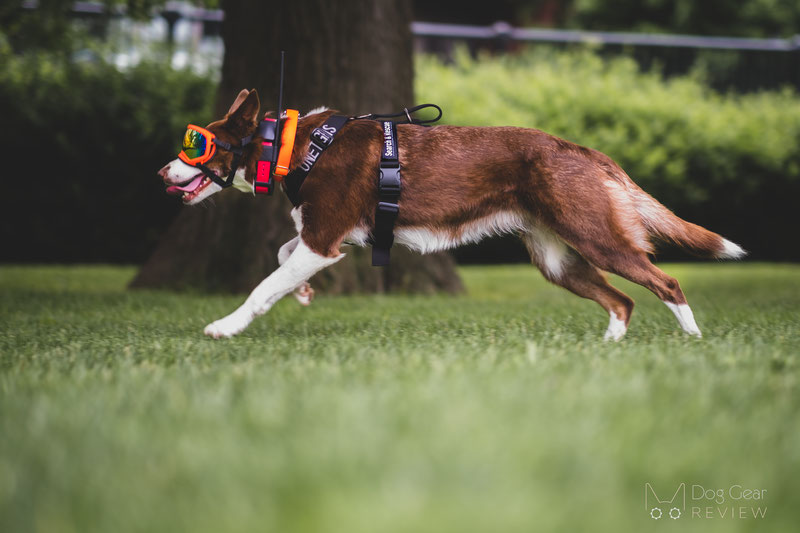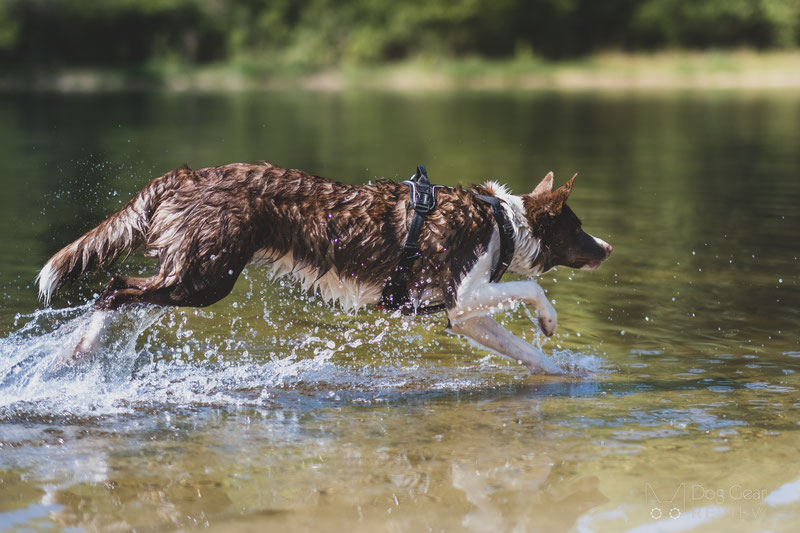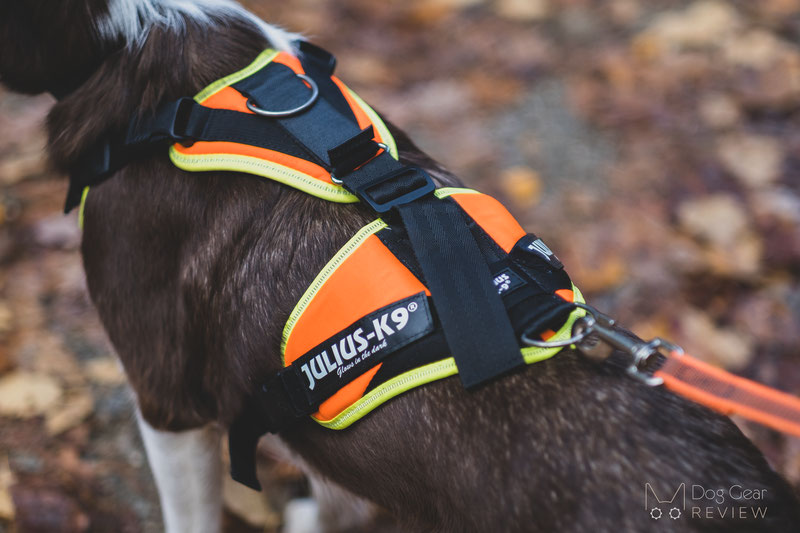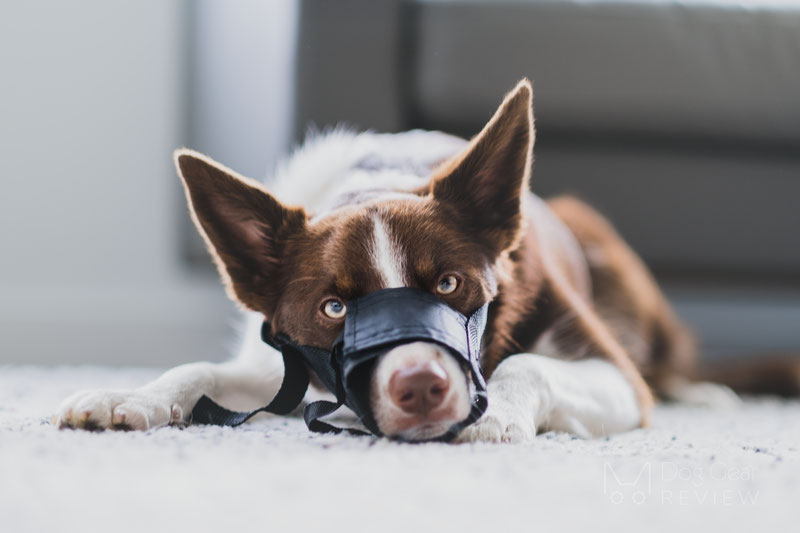We hear this question many times for a reason. Before starting testing cooling vests, we have also been questioning the effectiveness of cooling vests for dogs. Wouldn’t the dog be damp and warm under it? Do the vest trap the heat under and do more harm than good? Do these actually work?
So we went ahead and tested a few of them with the Seek Thermal Compact thermal imaging camera and with the Kizen LaserPro LP300 infrared thermometer. The Seek camera is not a high-end system, so the actual temperatures displayed on the photos are usually 4-6 Celsius higher than in reality. These thermal images are good enough to show differences in one image but not to compare the displayed temps between different photo sessions. This is why we added the infrared thermometer measurements to the article to check the actual temperature on some spots.
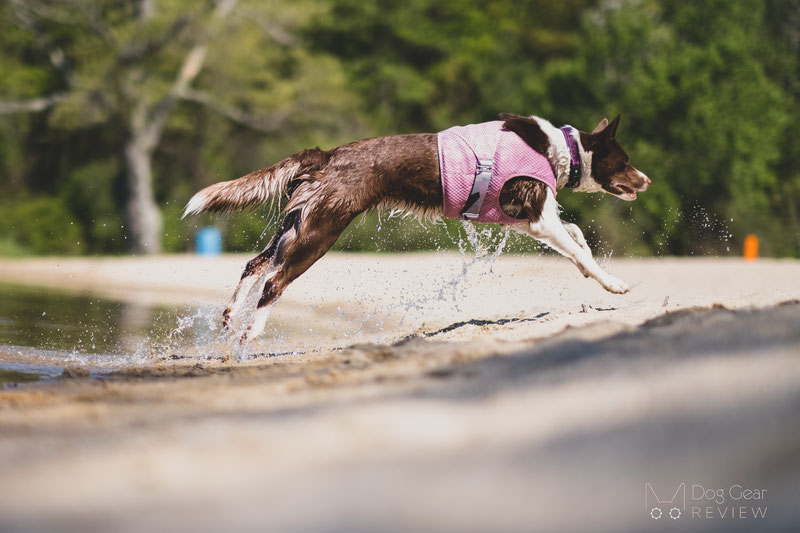
Why would a dog need help cooling down?
Some would argue that wolves or hunting/guarding/herding dogs never needed a colling vest or a cooling mat, and they were all fine, so all these products are just the result of the “dog mom culture.”
Well, if you think about it, there are many differences in our dogs’ lives these days compared to even a few hundred years ago. First of all, dogs used to live outside 24/7, so they had weeks/months to get used to the weather warming up at the beginning of the season. These days, most family pets spend most of their time in an airconditioned or at least a somewhat temperature-controlled environment, so it’s much harder for them to handle the heat when they go out.
Another difference is that traditional working dogs used to sleep through the hottest part of the day - preferably in a hole dug under a bush - and they didn’t venture out unless there was something worth checking out.
These days we might have to take the dogs for a quick walk in our lunch break, or we take them with us for a vacation to a sunny beach, or they sit with us on a boat/SUP in the sun. There are also service dogs and working dogs who need to work even when it’s hot, and their owner can’t choose to only walk them early in the morning and late at night when it’s cooler.
There are also many widely different breeds with very different needs and limitations. Originally dogs were bred for practical reasons, but as we all know, in the modern ages, most breeds were more bred for looks which took them far from those original working dogs/wolves.
Dogs are involved in our lives in very different ways than they used to, and many of them need some help to adjust to the situations we put them in. Does that mean that all dogs need a cooling vest/cooling mat or another cooling product? Absolutely not, but learning about these products and knowing when and how to use them can save dogs’ lives.

The Different Types of Cooling Vests
There are three main groups of cooling vests that we will discuss:
evaporation-based vests: work with adding water,
vests with an ice-sheet inserted or one that needs to be put in the freezer,
reflective vests that work as-is.
1. How Do Evaporation-Based Cooling Vests Work?
Evaporation-based Cooling Vests work by creating a big surface for evaporation. They utilize the same process when humans sweat to cool down because when the water changes from liquid to a gaseous state, it pulls energy from its surroundings, creating a small temperature drop.
You could achieve the same effect if you soak the dog before heading out for a walk, but wet fur can cause rubbing and hot spots on long-haired, double-coated dogs, while short/thin-haired dogs dry too fast for this to be effective over a more extended period. I always carry plenty of water when hiking with Mia, but it can be hard to effectively pour it on a double-coated dog. Most of the water poured on the coat usually just repels, and half an hour later, the dog is dry again. This makes using water directly on the dog ineffective and unrealistic if you hike and need to carry all that extra water.
A cooling vest makes applying water much easier and more effective while it provides a longer-lasting cooling effect.

The disadvantage of this solution is that the effectiveness of the evaporation process will depend on humidity levels. On a humid day, the evaporation will be very slow or even non-existent, so instead of cooling the dog with the vest, they just have an extra layer on warming them. On the other hand, if the air is dry and there is a strong wind, the evaporation process will be speedy, and the cooling vest might over cools the dog first then dries soon after.
If you want to read more about the pros and cons of other cooling products, check out our article introducing many options!
Let’s look into two evaporation-based cooling vests that we tested!
Hurtta Cooling Wrap
The Cooling Wrap is a soft and thick vest that snugly covers the chest area of the dog. The inner layer is made of a high-performance microfiber that can absorb a large amount of water. The outer layer’s 100% PES 3D mesh fabric allows airflow, while the other side has a 100% PES technical moisture-wicking lining to keep the dog comfortable under the Wrap.
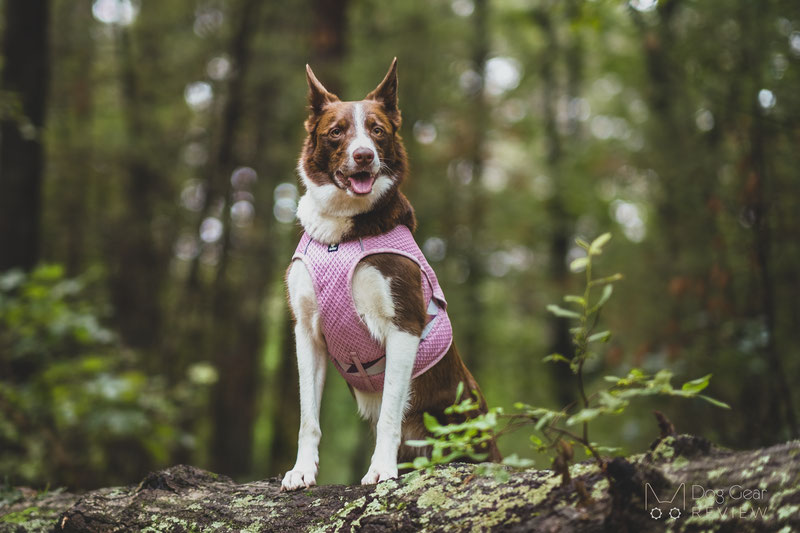
Hurtta Cooling Wrap
Snugly-fitting cooling vest
High water absorbtion and slow evaporation for a long lasting cooling effect.
Disclaimer: this review contains affiliate links, which support Dog Gear Review if you purchase the product after clicking on it without costing you anything extra. Using affiliate links will never compromise us in writing unbiased, honest reviews!
The Cooling Wrap is designed to cover the dog’s chest, where they are the least insulated and are the easiest to cool. Since the center of the blood circulation is around the lungs and the heart, their approach is to focus on cooling this area as much as possible. In addition, the half-length design leaves most of the dog’s back uncovered, which can be helpful to minimize injuries that can happen if we cool the joint and main muscle groups.
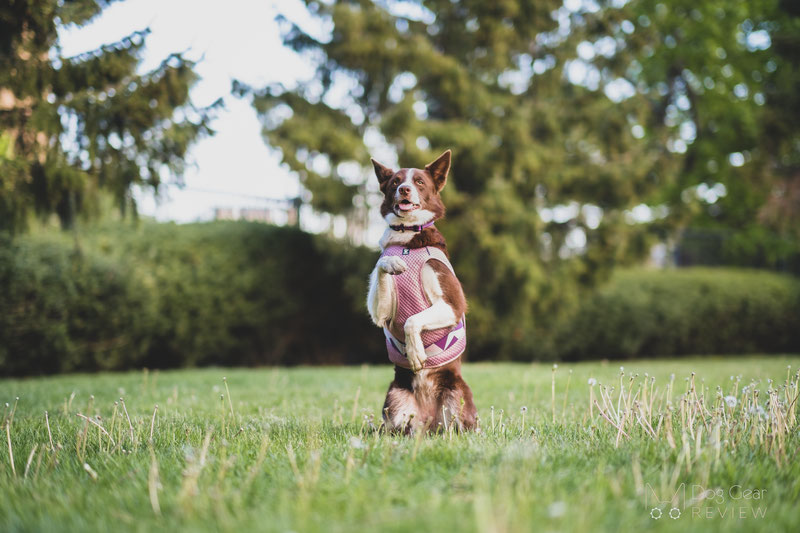
The drying time will significantly differ depending on the humidity of the air, wind, and sun, but this Wrap stayed wet for hours when we used it.
To objectively test the effectiveness of the Wrap, I took Mia for a half-hour walk on a hot day. At the beginning of the walk, I applied half a liter (~2 cups) of water to the Wrap, which absorbed quickly. After the walk, I removed the Wrap and took the attached photo with a thermal camera WITHOUT the Wrap. The fur under the vest wasn’t completely dry but wasn’t dump either, and it was significantly cooler than the other areas. As you see in the photo, “cooler” means that her fur’s surface temperature was close to the temperature of the grass in the shade, so we are not talking about overcooling the dog’s shoulder and chest area.

We also checked the actual temperatures with the infrared thermometer and got the numbers below. It was a day with 55% humidity and heat radiating from everywhere after a heatwave, so the difference wasn’t that significant, like when we tested the previous cooling vest. This was the same day I soaked both cooling vests and left them out for 6 hours to check their effectiveness regularly. The measurements were almost the same every time we checked them over 4 hours, so they seem to perform very similarly.
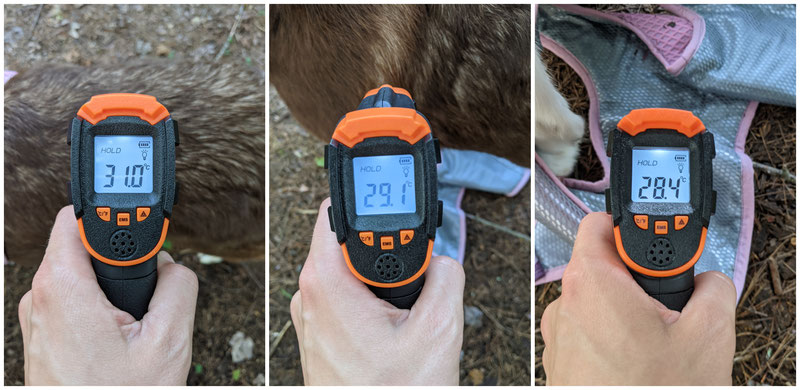
Although these measurements only show the surface temperature on a double-coated dog, it confirms that the cooling vests do work, and it’s fair to assume it somewhat helps dogs keep their temperature lower. Unfortunately, it is impossible to tell upfront how much an evaporation vest would benefit a specific dog because it depends on many unique features. For example, while a Greyhound might be too cold under an evaporation vest, a Golden might not feel a big difference while wearing it. All we can say is that it seems to help Mia stay cool longer and cool down faster after a search task.
If you want to learn more about the Hurtta Cooling Wrap, you can check out our detailed review for more information!
EQDOG Cool Dog
The EQDOG Cool Dog Vest is made of ACO-DRY® material and a durable Hex-Mesh Nylon. Their approach to cooling the dog is to cool them more evenly (on a bigger surface) rather than only focus on the chest/shoulder area. The reason behind their decision is that the colling effect will only be mild, not like other vests using ice. In their opinion, cooling a dog by 1 or 2 degrees will not have a diverse effect on the joints, muscles, or spine, while evenly cooling the body will result in higher effectiveness altogether. This design also allows free shoulder movement that a more closed design around this area might not.
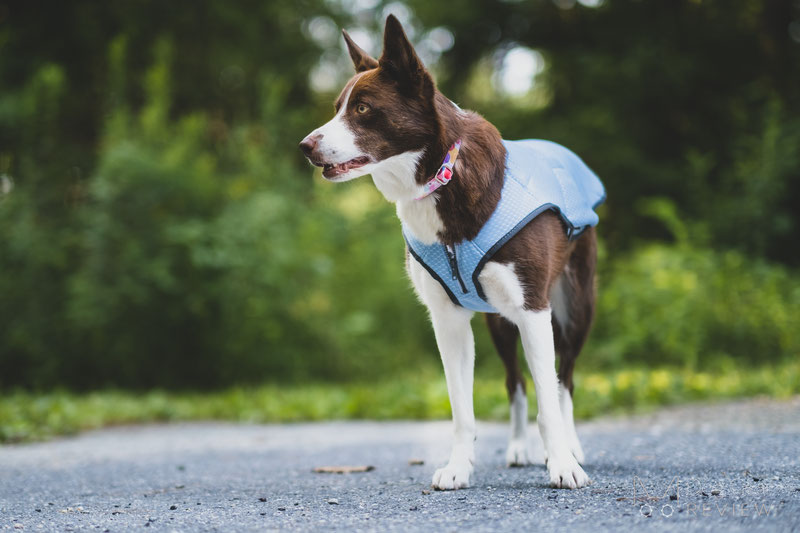
EQDOG Cool Dog
Loosly-fitting cooling vest
High water absorbtion and extended coverage on the back.
Disclaimer: this review contains affiliate links, which support Dog Gear Review if you purchase the product after clicking on it without costing you anything extra. Using affiliate links will never compromise us in writing unbiased, honest reviews!
The thermal image on the left shows the Cool Dog on Mia, while the second is right after removing it. As visible, the coat is cooler than the dog or the environment, and Mia is comfortably cool under it. We repeated the experiment on two different days, first walking for half an hour on a 28 Celsius (82 Fahrenheit) day, the second time walking for 15 minutes on a 34 Celsius day (93 Fahrenheit), and got the same results.

We also checked Mia’s fur’s and the vest’s temperature with an infrared thermometer to specify the effect.
The first two measurements are from her head and side that weren’t covered by the vest, while the third is the middle section covered by the vest, and the last is the inside of the vest right after taking it off. I took multiple measurements on each spot, and they were reasonably consistent, so I’m confident saying the vest does make a difference, at least in the surface temperature of the dog.
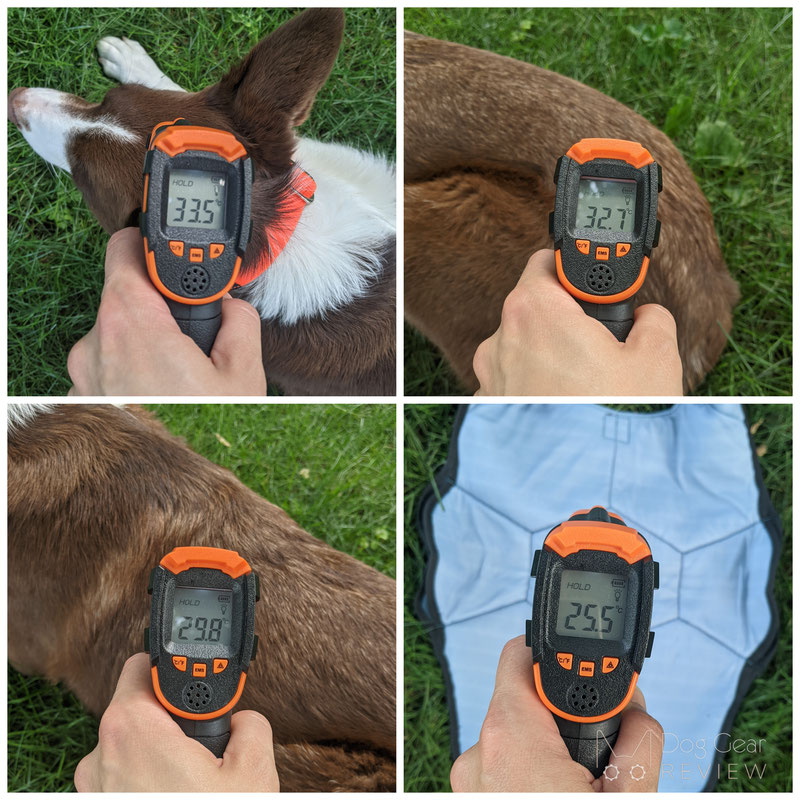
If you want to learn more about the Hurtta Cooling Wrap, you can check out our detailed review for more information!
2. Cooling Vests with Ice/from the Freezer
After discussing the importance of cooling the dog, we might ask why not put the vest in the freezer before a trip or soak it in ice water before use? The colder, the better, right? Well, not exactly.
One of the risks of putting an ice-cold vest on a dog is making them uncomfortable if they have any joint issues. Something to keep in mind with these vests is that dogs can not walk away from the cooling effect if it’s uncomfortable for them. “Uncomfortable” can mean different things for different dogs. A Golden retriever has enough insulation that they might not care about having an ice sheet on them, but the same might be way too much for a Greyhound.
The other main risk with overcooling an area is that the blood vessels will constrict from the sudden cold, restricting the blood flow. The body’s natural reaction to prevent overheating would be to dilate the blood vessels to increase blood flow to get rid of the heat while we step in and force it to do the opposite. We want to cool the dog but don’t want to shock its body during this process. If the dog just worked on a hot day and one puts a coat on them that was just in the freezer/soaked in ice water, they risk shocking their body the same way when someone falls into cold water.
3. How Do Reflective Vests Work?
Some vests do not provide active cooling but help the dog by reflecting the sun. The advantage is that you can use it anywhere, anytime, with no need to carry extra water or make the dog wet. The reflective vest behaves like a partial shade over the dog, which can be great if they have to wait on the sun during a show/competition or if you are doing long-distance hikes. It also helps to reflect heat radiating from the environment in general, not just from the sun.
While this technology can be beneficial in many situations, it also has clear limitations that are very important to understand to keep the dogs safe! Although they are still called “cooling vests,” these don’t cool the dog down and will not limit them heating up due to exercises; it only slows the temperature increase due to heat radiation. Imagine playing fetch on a hot and humid day in the shade: the dog will still overheat fast, although slower than they would in the sun.
Don’t forget that it doesn’t completely cover the dog either, so their head and neck are still warming up. While technically, you can soak these vests in water to provide active cooling, this is not their primary use case, and they usually don’t retain a significant amount of water.
Chillybuddy Cooling Jacket
The Chillybuddy Cooling Jacket is a well-made but thin jacket that reflects 70% of the infrared radiation on the dog’s back. The outer material is woven synthetic with an aluminized finish (called Aluminet), also used for car shades.
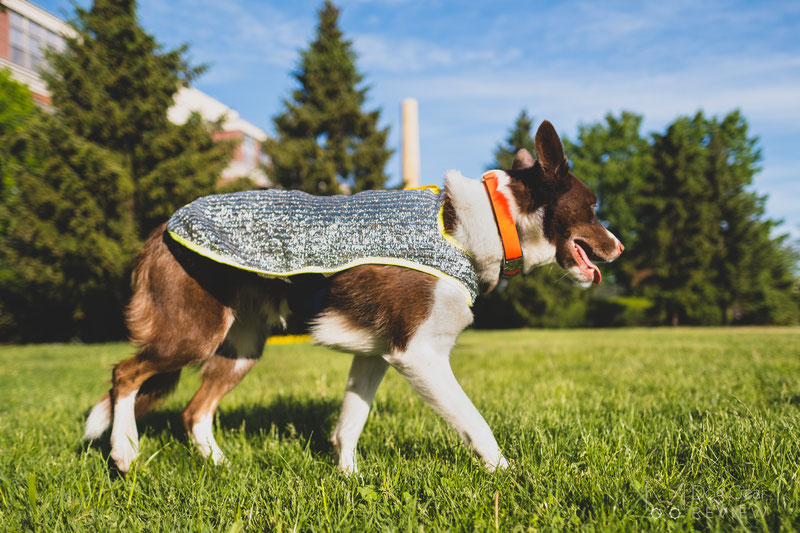
Chillybuddy Cooling Jacket
Loosly-fitting reflective vest
Aluminet protection against the sun.
Disclaimer: this review contains affiliate links, which support Dog Gear Review if you purchase the product after clicking on it without costing you anything extra. Using affiliate links will never compromise us in writing unbiased, honest reviews!
The insulating cotton-mesh layer under the reflective top provides airflow, which is crucial to protect the dog from heat and prevent the vest from reflecting the dog’s body heat.
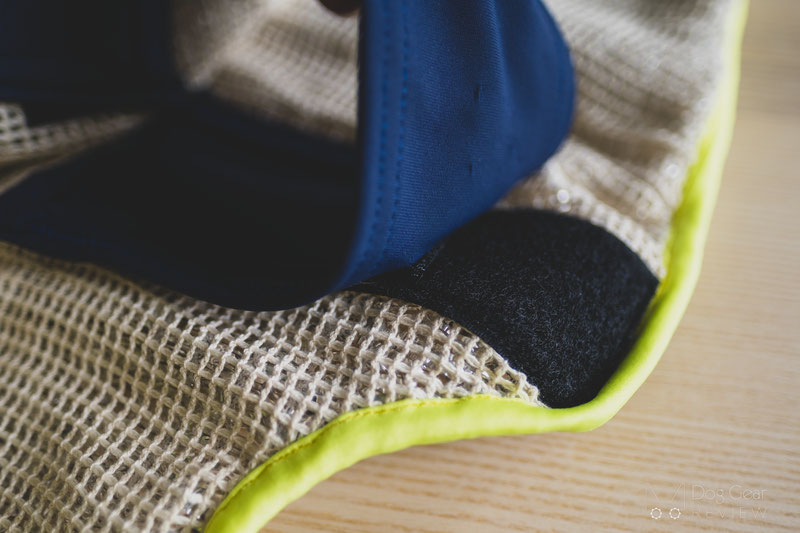
Checking the Chillybuddy Cooling vest with a thermal camera shows the reflecting effect over the coat. Since this isn’t actively cooling the dog, the thermal camera didn’t show a significant surface temperature difference under the vest vs. on other parts of the dog after a half-hour walk on the sun.
If we look closely enough, there is a minimal difference under the coat, but I expected to see a more significant temperature difference on the “sunny” vs. “shady” parts. I repeated the same experiment on a second, sunnier but cooler day. Surprisingly, I got the same results. On the other hand, when checking her fur with my palms, her fur under the coat felt slightly less hot - but definitely not cool. While the uncovered hair was radiating heat, the parts under the vest were just simply warm due to warming up on a hot day.
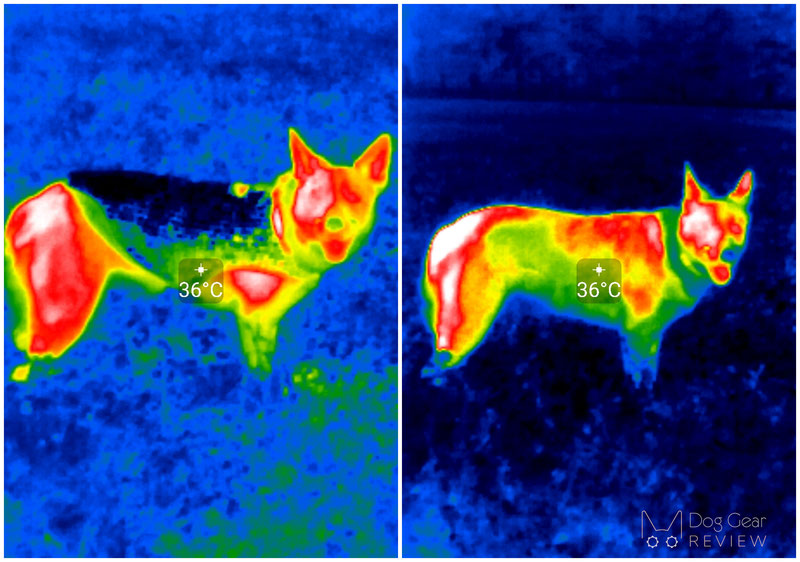
If you want to learn more about the Hurtta Cooling Wrap, you can check out our detailed review for more information!
Saratoga Horseworks K9 Cool Coat
The other reflective vest we tested is the K9 Cool Coat which also works by blocking the UVA and UVB radiation to slow down the warming process. You can submerge it in water, but it barely retains any, so the added cooling effect will only be short-term.
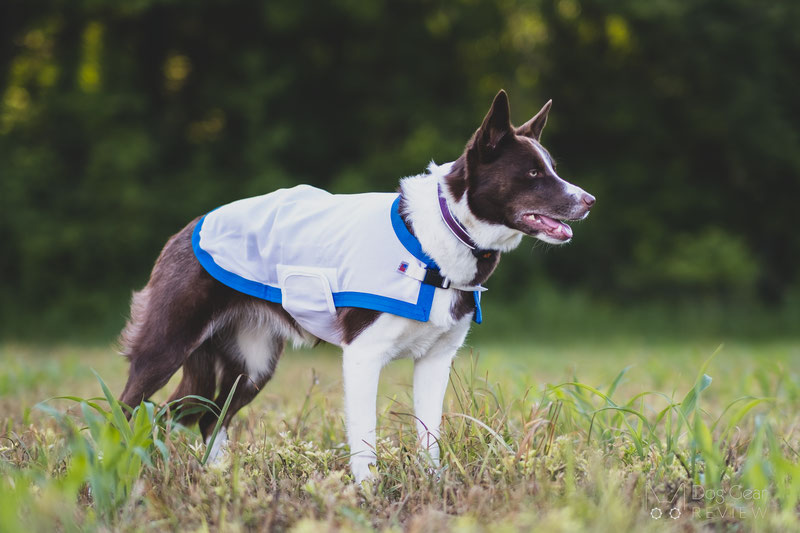
Saratoga Horseworks K9 Cool Coat
Loosly-fitting Oasis fabric vest
A material and coat originally designed for horses to block the UVA and UVB radiation.
Disclaimer: this review contains affiliate links, which support Dog Gear Review if you purchase the product after clicking on it without costing you anything extra. Using affiliate links will never compromise us in writing unbiased, honest reviews!
Saratoga Horseworks make this from the same Oasis fabric that’s used for horses. This is a 100% polyester mesh that’s super breathable, feels cool to the touch, and is very durable compared to the sensitive outer material of the Chillybuddy Vest.

Below you see the thermal images with the coat on and when removing the vest after a 30-minute walk in the sun. After repeating this measurement twice, I ended up with the same results that we have seen in the case of the Aluminet vest: wearing the vest does make a slight difference, but it’s not significant. Another aspect worth considering is that the K9 Cool Coat seems to offer better breathability than the Chillybuddy Vest and that the Oasis material is less sensitive than the Aluminet.
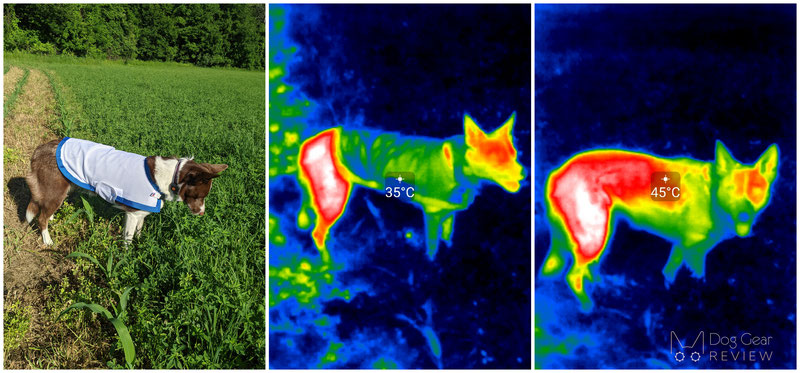
If you want to learn more about the Hurtta Cooling Wrap, you can check out our detailed review for more information!
Limitations of all dog cooling products
It would be great if we could buy something and we wouldn’t need to worry about our dogs overheating at all, but unfortunately, this is not the case. Stacking up cooling beds, cooling vests, fans, etc., can make our dogs’ lives much more comfortable, but having all these still doesn’t mean we can expect them not to have issues with the heat. There will be hot and humid days when you still need to stay home with your dog instead of going for that adventure that you planned.
These products are here to help, but their effectiveness will be different for every dog, and the risk of overheating will also change if your dog gets older, gains some weight, or has health issues, or if the air humidity is changing. Even if you buy all available cooling products, your dog can still overheat. Overheating can be a life or death situation for dogs, and we have to keep in mind that none of these products can completely eliminate this risk on some days.
Another important disclaimer is that in this article, we talk about helping the dogs to STAY cool, not to bring down their temperature once they are already overheated. Being proactive and using some cooling solution BEFORE your dog is struggling is much safer and is more effective.



